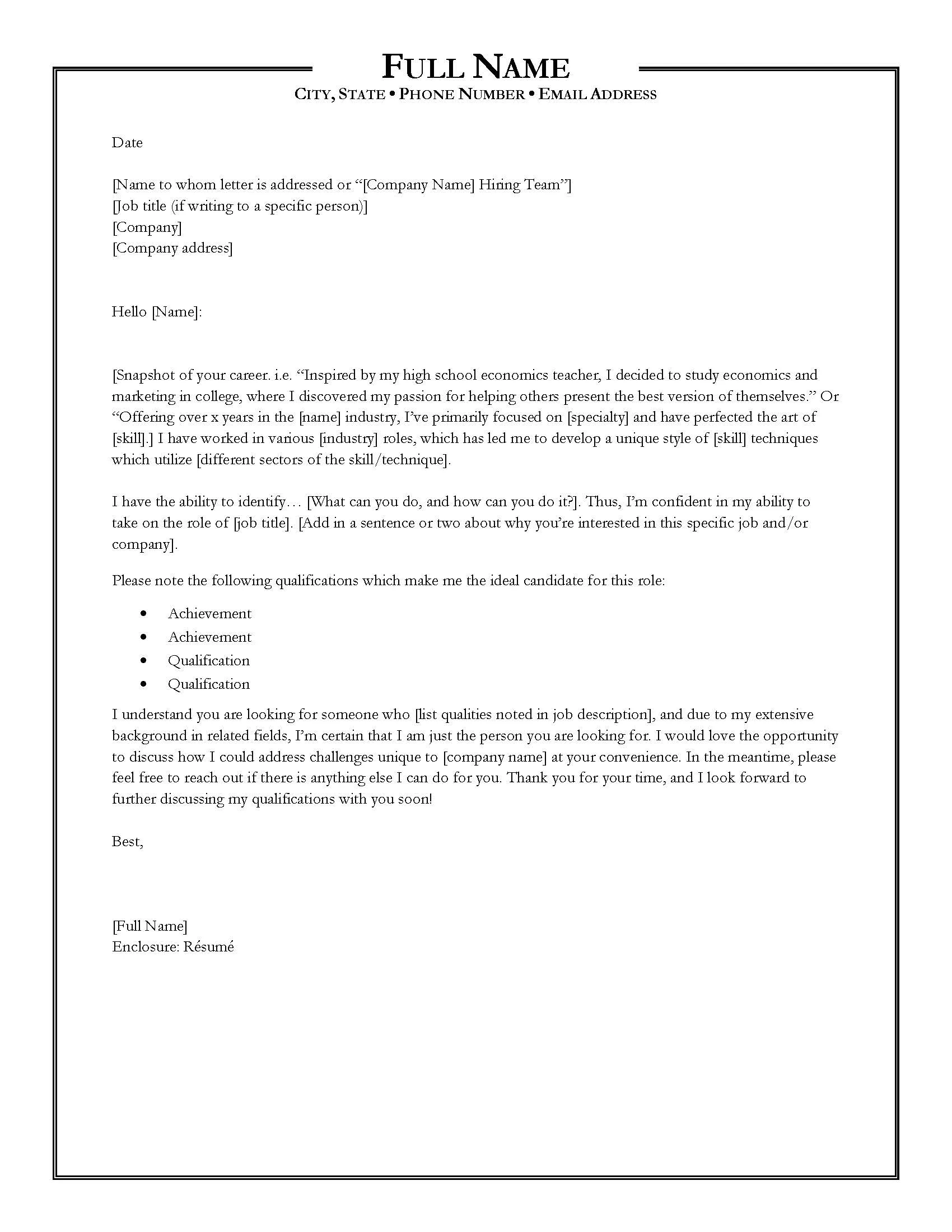What is a Cover Letter
A cover letter is a crucial document that accompanies your resume when applying for a job. It serves as a personal introduction, allowing you to highlight your skills, experiences, and why you’re a perfect fit for the position. Unlike a resume, which provides a summary of your qualifications, a cover letter gives you the opportunity to elaborate on specific achievements and express your enthusiasm for the role and the company. Think of it as your chance to make a strong first impression and convince the hiring manager to read your resume closely. It’s a tool to persuade the employer to call you for an interview.
Why Is a Cover Letter Important
In today’s competitive job market, a well-crafted cover letter can significantly increase your chances of getting noticed. It provides a platform to showcase your personality and demonstrate your understanding of the job requirements. Many recruiters and hiring managers consider a cover letter essential, as it reveals your communication skills, attention to detail, and genuine interest in the opportunity. Without a cover letter, your application might appear incomplete or less engaging. A cover letter helps you stand out from other applicants and gives the employer a clear picture of your qualifications and goals. This gives the recruiter information to make a better decision in your favor.
Key Components of a Cover Letter
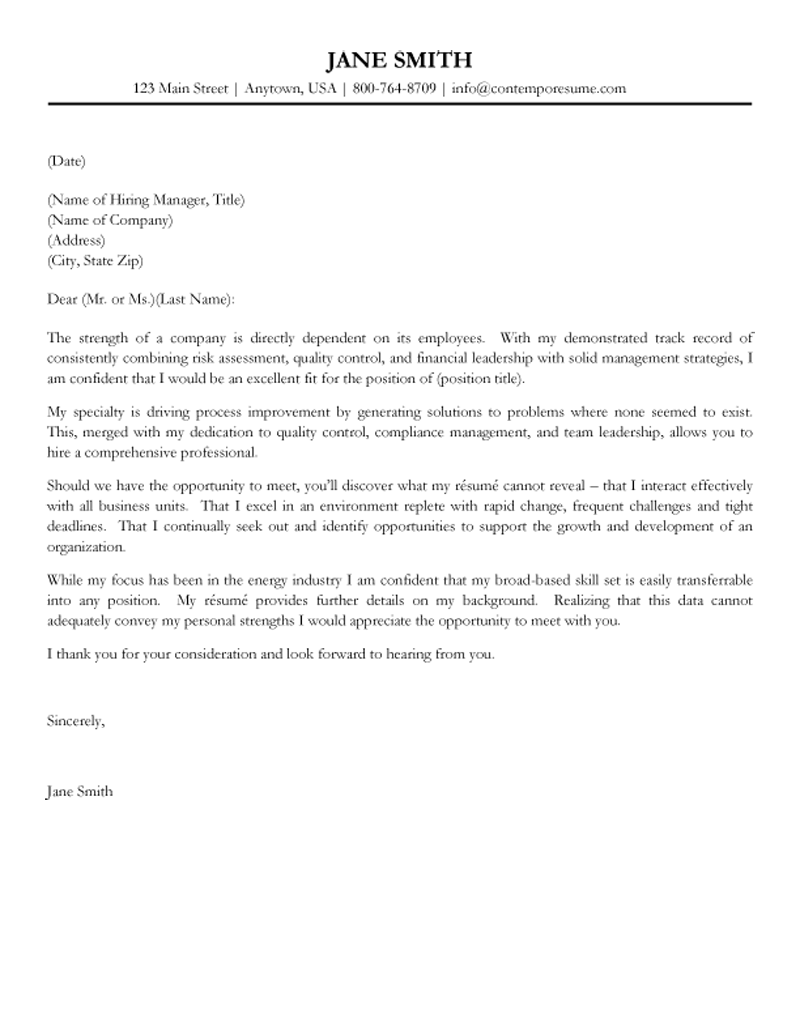
A compelling cover letter comprises several key components that work together to create a strong impression. Each section serves a specific purpose in communicating your value to the employer. These are essential elements that will help the employer to get to know you better. Here’s a breakdown of the core elements you should include.
Your Contact Information
Start with your contact information at the top, including your name, phone number, email address, and optionally, your LinkedIn profile URL. Make sure this information is accurate and easy to read, so the recruiter can quickly reach you. Use a professional-looking email address.
The Recipient’s Information
Address the letter to the hiring manager or the specific person mentioned in the job posting. If you can’t find a name, use a professional greeting such as “Dear Hiring Manager.” Always research the company and the role to ensure your letter is directed to the right person.
The Greeting
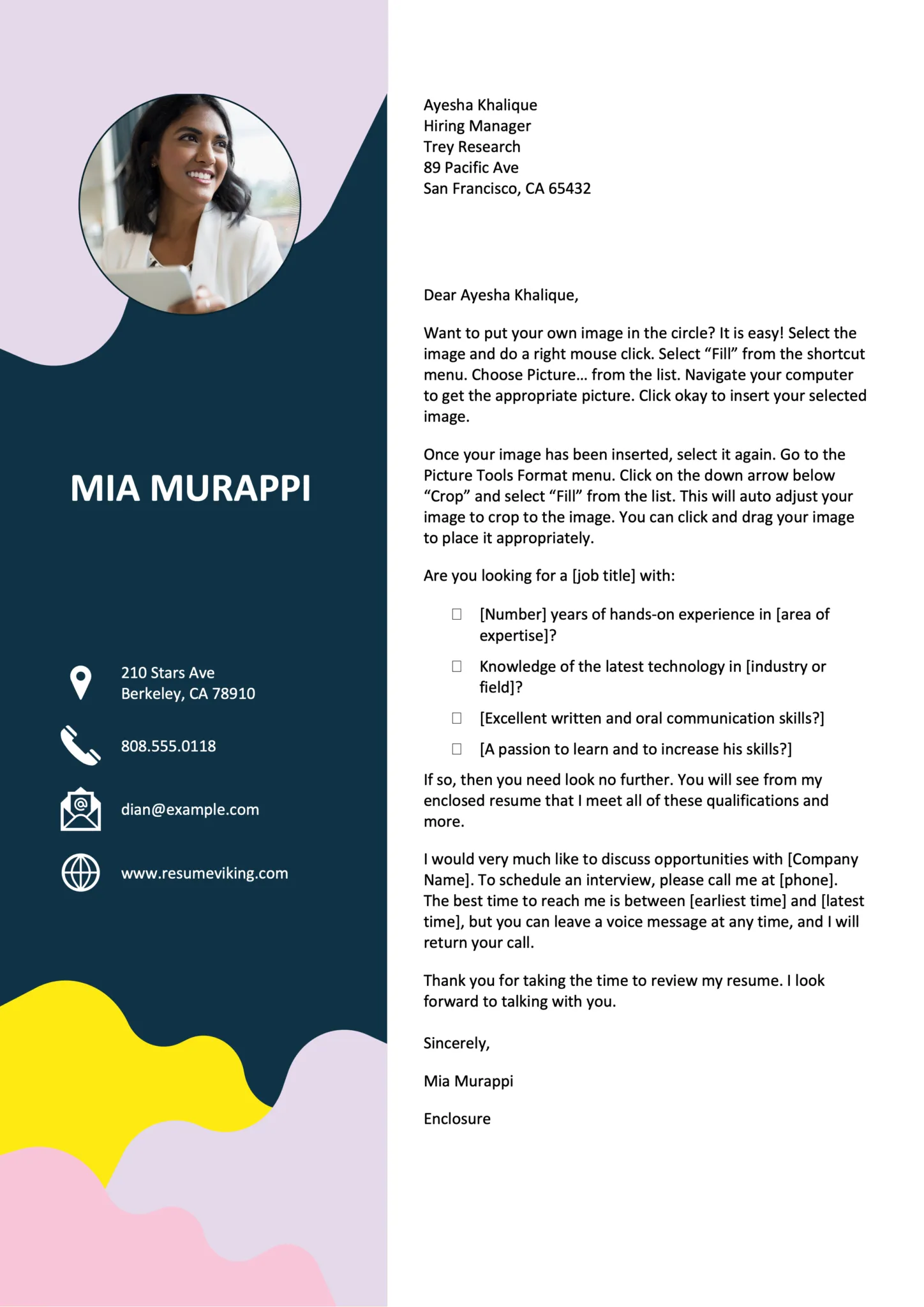
Use a professional and appropriate greeting. “Dear Mr./Ms./Mx. [Last Name]” is generally preferred. If you’re unsure of the recipient’s gender, use their full name, or “Dear Hiring Manager.” Avoid generic greetings like “To Whom It May Concern.”
Body Paragraphs
The body of your cover letter is where you sell yourself. It typically includes an opening paragraph, a few middle paragraphs highlighting your skills and experiences, and a closing paragraph. The body is the meat of the letter and will contain the persuasive information. Each paragraph should focus on a specific aspect of your qualifications and how they relate to the job requirements. Remember to be clear, concise, and engaging. Use examples to support your claims and demonstrate how you’ve made a positive impact in previous roles.
Highlighting Your Skills and Experience
In the middle paragraphs, emphasize the skills and experiences that align with the job description. Instead of simply listing your responsibilities, focus on your accomplishments and the results you achieved. Use action verbs to describe your contributions. For example, instead of saying “Managed social media accounts,” say “Increased social media engagement by 30% through strategic content planning and audience interaction.”
Tailoring Your Letter to the Job

Customize your cover letter for each job application. Review the job description carefully and identify the key requirements. Use the job description to tailor your letter, showing how your skills and experiences match the employer’s needs. Be specific, and provide relevant examples from your work history that demonstrate your ability to excel in the role. Never submit a generic cover letter; personalization is essential for success.
Call to Action
In your closing paragraph, include a call to action. Express your interest in the position and your eagerness to discuss your qualifications further in an interview. Reiterate your contact information. This provides a clear next step for the employer and reinforces your enthusiasm.
Closing and Signature
Use a professional closing such as “Sincerely,” or “Best regards.” Leave space for your signature (if printing the letter) and type your full name below. This concludes your cover letter in a formal way.
Cover Letter Format and Design
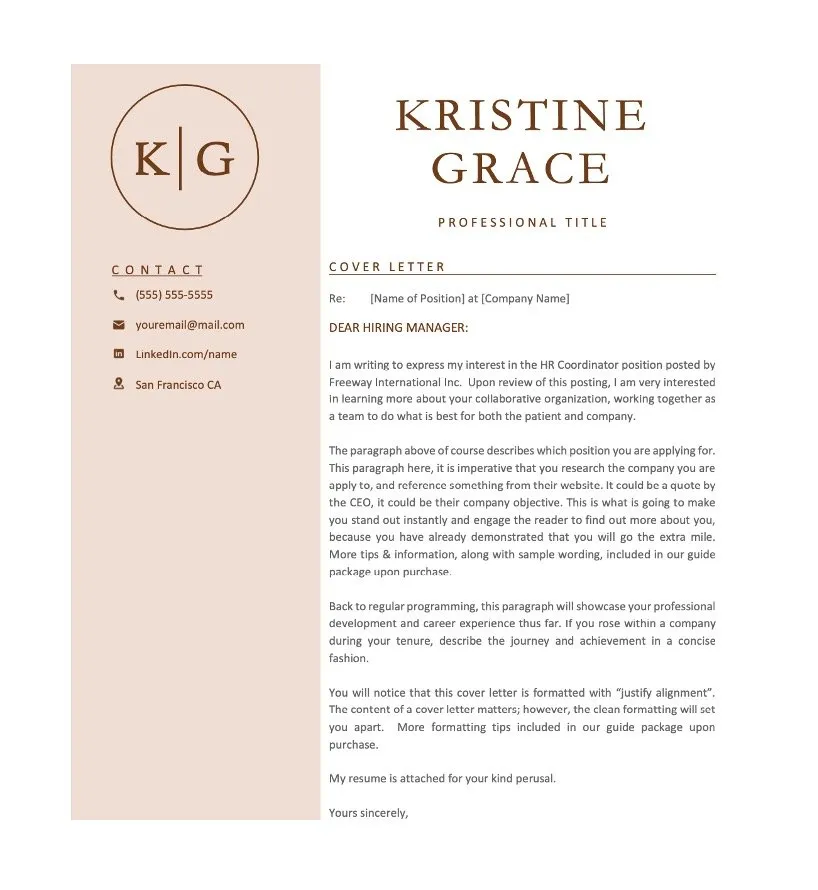
The format and design of your cover letter play a significant role in its overall presentation. A well-formatted letter is easy to read and visually appealing. It shows that you pay attention to detail, which is a valuable skill in any workplace. Here’s how to ensure your cover letter looks its best.
Choosing the Right Font and Font Size
Choose a professional and easy-to-read font, such as Times New Roman, Arial, or Calibri. Use a font size between 10 and 12 points for the body of the text. This ensures the letter is readable without appearing too small or too large. Consistency in formatting is key; avoid using multiple fonts.
Maintaining a Professional Tone
Keep a professional tone throughout your cover letter. Use formal language, avoid slang or jargon, and maintain a respectful and enthusiastic attitude. Proofread carefully to eliminate any typos or grammatical errors. Ensure that your tone reflects your professionalism and your genuine interest in the job.
Proofreading and Editing
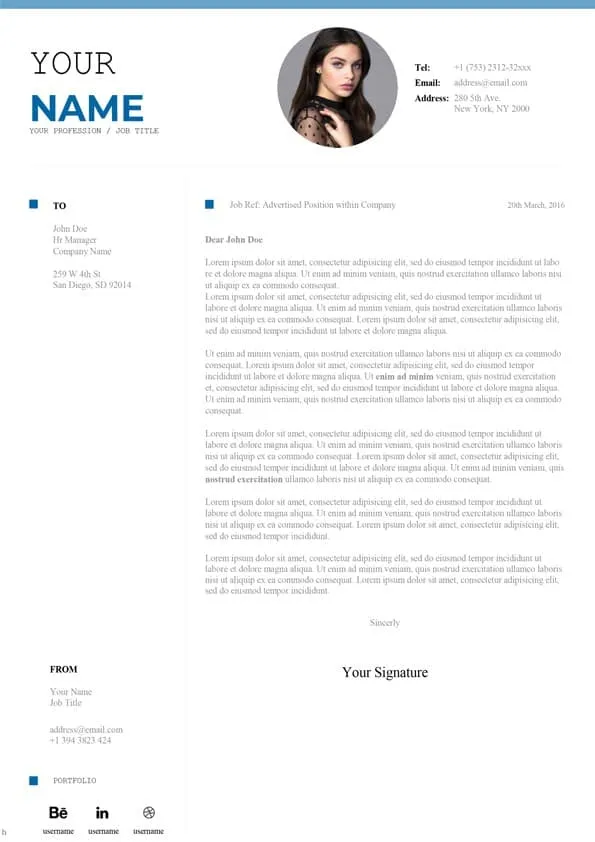
Always proofread your cover letter carefully before submitting it. Check for any spelling mistakes, grammatical errors, and inconsistencies in formatting. Consider having a friend or career counselor review your letter to catch any mistakes you might have missed. A well-edited cover letter shows that you pay attention to detail, which is a very important aspect of your application.
Tips for Writing a Cover Letter That Stands Out
To make your cover letter stand out, consider the following tips. These steps will help you make a great impression on the hiring manager. By following these tips, you’ll be well on your way to landing an interview and getting hired.
Research the Company
Before writing your cover letter, research the company and the role. Understand their mission, values, and recent accomplishments. Tailor your letter to show how your skills and experiences align with the company’s goals. Highlighting your knowledge of the company will show your genuine interest in the position.
Use Keywords from the Job Description
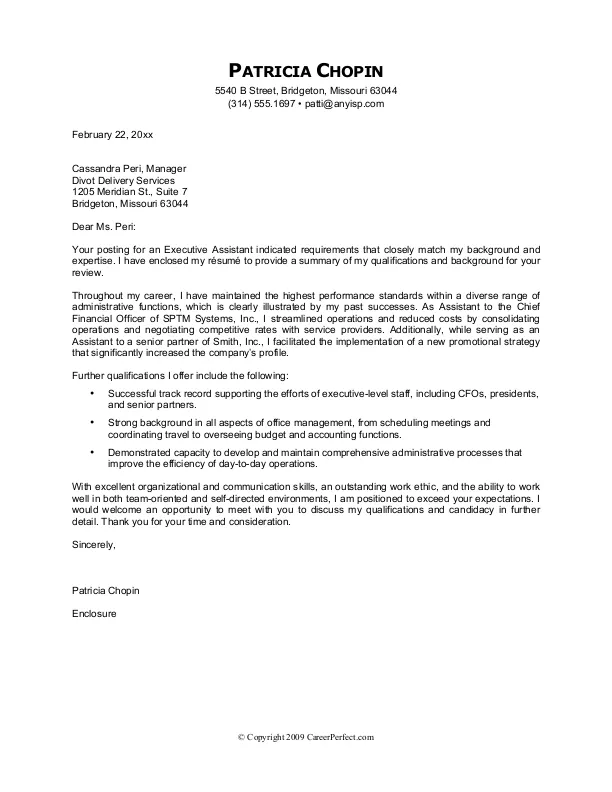
Carefully review the job description and identify the keywords used to describe the required skills and qualifications. Incorporate these keywords into your cover letter. This helps the hiring manager quickly see that you meet the job requirements. This is a strategy to pass through the Applicant Tracking System (ATS).
Show, Don’t Tell
Instead of simply stating your skills and abilities, provide specific examples that demonstrate your achievements. Use the STAR method (Situation, Task, Action, Result) to structure your examples. This approach allows you to showcase your capabilities in a clear and compelling way. Use real-life examples to prove that you can deliver.
Quantify Your Accomplishments
Whenever possible, quantify your accomplishments with numbers and data. Instead of saying “Improved customer satisfaction,” say “Increased customer satisfaction scores by 15%.” Quantifiable achievements provide concrete evidence of your impact and make your cover letter more persuasive.
Cover Letter Examples
Here are two examples to provide a better understanding of cover letter writing. Note the format and content in the following examples.
Example 1 Entry-Level
Jane Doe 123 Main Street Anytown, CA 12345 (555) 123-4567 jane.doe@email.com
October 26, 2024
Mr. John Smith Hiring Manager ABC Company 456 Oak Avenue Anytown, CA 67890
Dear Mr. Smith,
I am writing to express my interest in the entry-level Marketing Assistant position at ABC Company, as advertised on LinkedIn. I am a recent graduate with a Bachelor’s degree in Marketing from the University of California, Berkeley, and I am eager to apply my knowledge and skills in a dynamic and innovative environment.
During my studies, I gained hands-on experience through various marketing projects and internships. I successfully managed social media campaigns for student organizations, increasing engagement by 25%. Additionally, I assisted in developing marketing strategies and creating promotional materials that resulted in a 10% increase in event attendance.
I am particularly drawn to ABC Company’s reputation for innovation and commitment to customer satisfaction. I am confident that my strong communication skills, attention to detail, and passion for marketing align perfectly with your company’s values and the requirements of the position.
Thank you for your time and consideration. I have attached my resume for your review and welcome the opportunity to discuss my qualifications further. I can be reached at (555) 123-4567 or jane.doe@email.com.
Sincerely, Jane Doe
Example 2 Mid-Career Professional
Michael Brown 789 Pine Lane Anytown, CA 98765 (555) 987-6543 michael.brown@email.com
October 26, 2024
Ms. Sarah Johnson Director of Operations XYZ Corporation 101 Elm Street Anytown, CA 54321
Dear Ms. Johnson,
I am writing to express my interest in the Director of Operations position at XYZ Corporation, as advertised on your company website. With over ten years of experience in operations management, I am confident that I possess the leadership skills and expertise to significantly contribute to your team’s success.
In my previous role as Operations Manager at DEF Inc., I successfully streamlined operational processes, resulting in a 20% reduction in costs and a 15% increase in productivity. I am skilled in project management, process improvement, and team leadership. I have a proven track record of driving operational excellence and achieving significant results.
I am particularly impressed with XYZ Corporation’s commitment to innovation and its focus on customer satisfaction. I am excited about the opportunity to apply my skills and experience to contribute to your company’s continued growth and success. I am a highly organized and self-motivated professional, with excellent communication and interpersonal skills. I’m eager to learn new techniques to succeed in the position.
Thank you for your time and consideration. I have attached my resume for your review. I am available for an interview at your earliest convenience and can be reached at (555) 987-6543 or michael.brown@email.com.
Sincerely, Michael Brown
Common Cover Letter Mistakes to Avoid
Avoiding common mistakes can significantly improve your cover letter and increase your chances of getting noticed. Reviewing the following mistakes can help you create a more effective cover letter.
Typos and Grammatical Errors
Typos and grammatical errors can make your cover letter look unprofessional and careless. Always proofread your letter carefully, and consider having someone else review it. Mistakes can damage your credibility and make it difficult to get the job. Carefully check for errors.
Generic Cover Letters
Sending a generic cover letter that is not tailored to the specific job and company is a common mistake. Employers can easily tell when a cover letter is not customized. Personalize each cover letter to demonstrate your understanding of the job and your genuine interest in the position. Tailoring it shows you care about the position.
Focusing on What You Want, Not What You Can Offer
Avoid focusing solely on your career goals and what you want from the job. Instead, emphasize what you can offer the employer. Highlight your skills, experiences, and accomplishments, and show how you can contribute to their success. Focus on your value proposition and how you can add value to the company.
